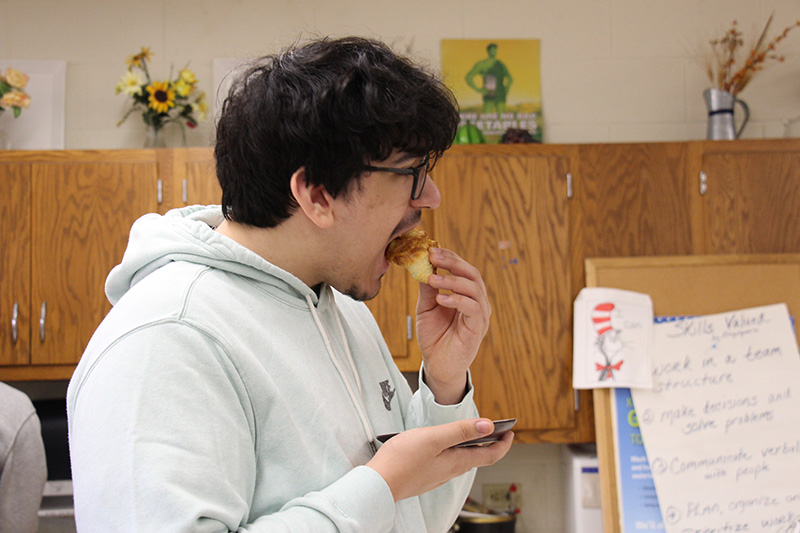What’s the difference between baking soda and baking powder? Why are some pancakes fluffy and others flat and rubbery?
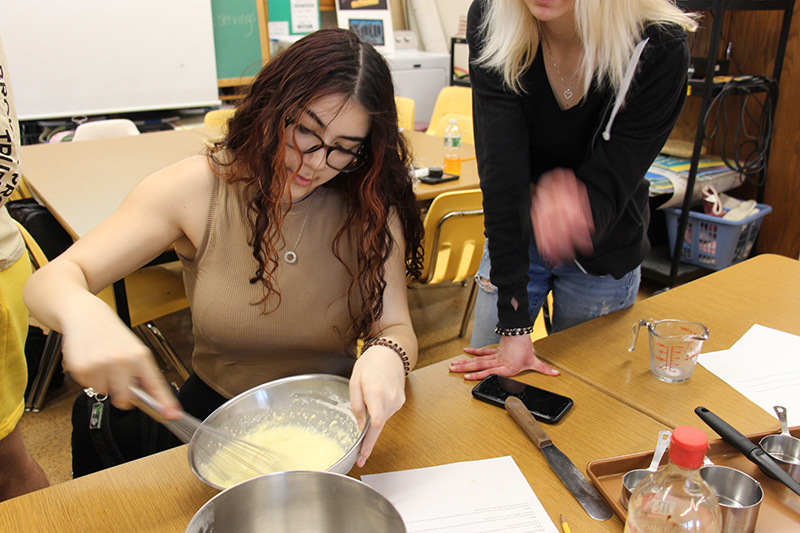
Students in Leeann Noonan’s Principles of Baking class know the answers to those questions, conundrums and so much more.
Ms. Noonan has taught her students there are different types of leavening agents – substances that cause dough to rise. There are chemical agents – baking soda and baking powder; natural ones – air and steam; and fermentations – think yeast!
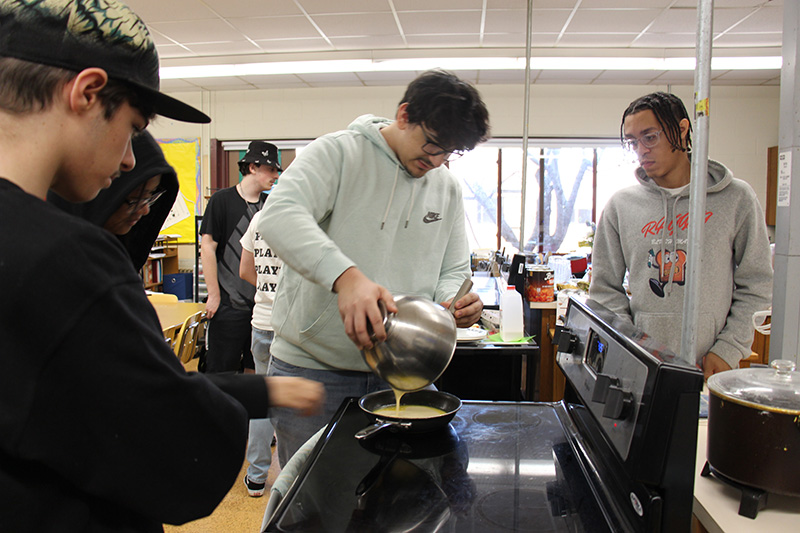
The students recently made a Dutch baby pancake, not your average pancake but more of a soufflé type. This recipe used steam in the oven to cause the pancake to rise and be fluffy. The students carefully mixed their ingredients making sure they were just combined and not overmixed.
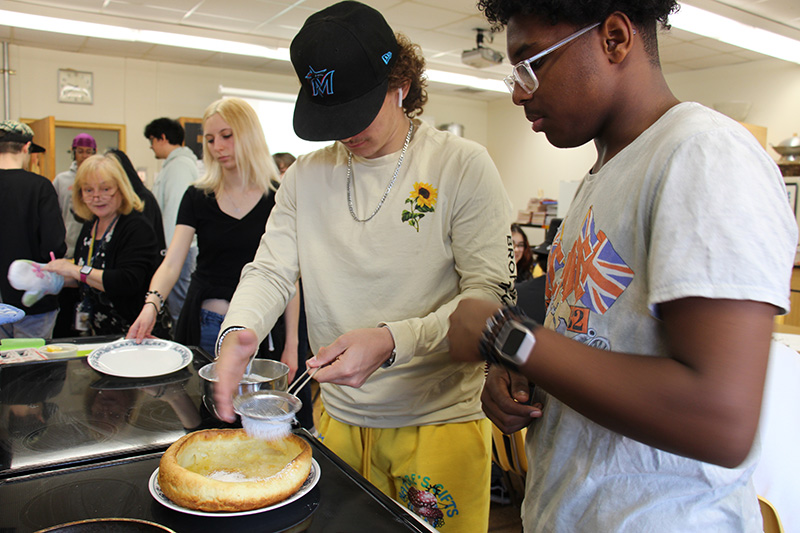
”It’s all about the gluten,” said Ms. Noonan. “Don’t overmix! If you do, you’ll have a rubbery pancake.” Lumps are acceptable, she added.
They melted their butter in their cast-iron skillet, added their batter and transferred it to the oven where it baked for about 20 minutes. During that time, the steam created in the oven caused the Dutch baby pancake to rise up like a soufflé! When it was done, the students sprinkled it with confectioners’ sugar and enjoyed its deliciousness!
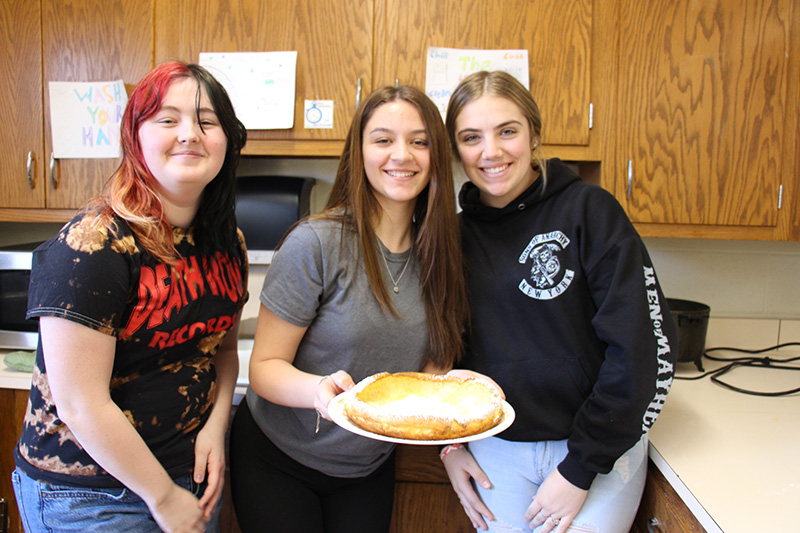
While the pancakes were baking, students did their cost analysis, figuring out how much all of its ingredients cost based on how much they used, coming up with a cost per serving. This information is helpful for when the students are on their own, cooking and budgeting.
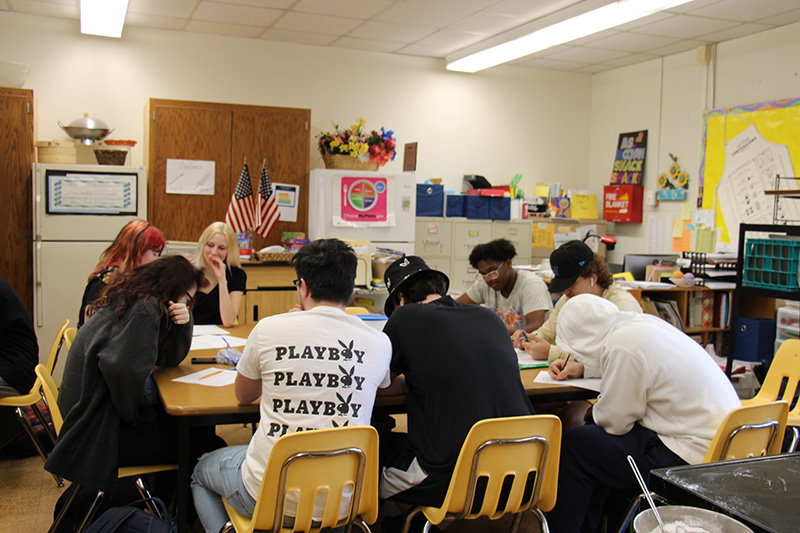
They all enjoyed their pancakes – they looked delicious! – and tucked the recipe away in the cookbooks they’ve created throughout the school year.
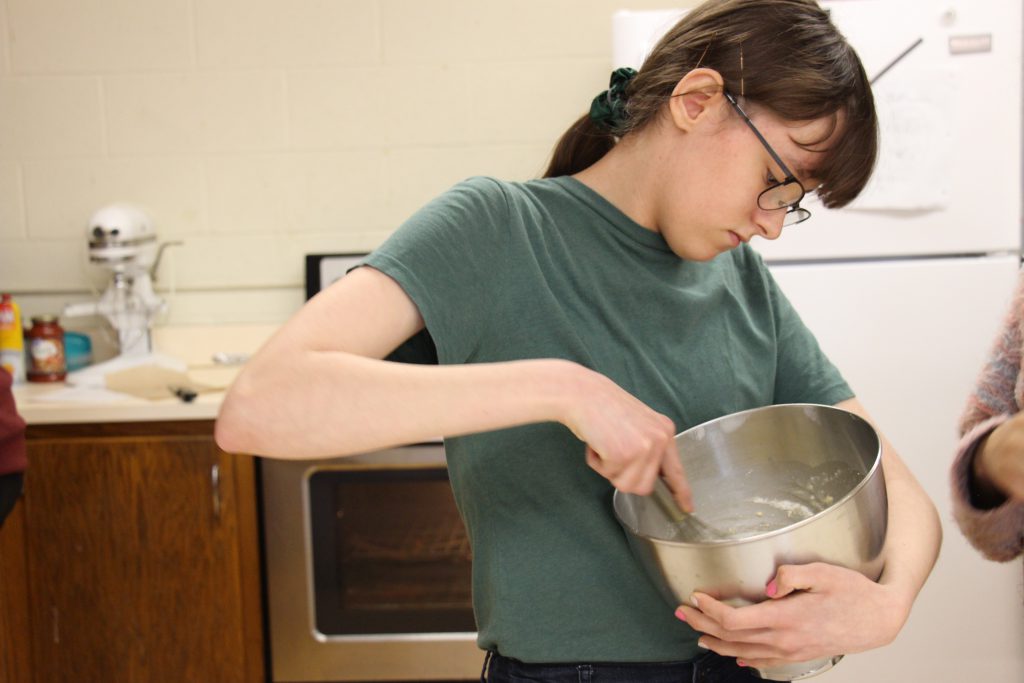
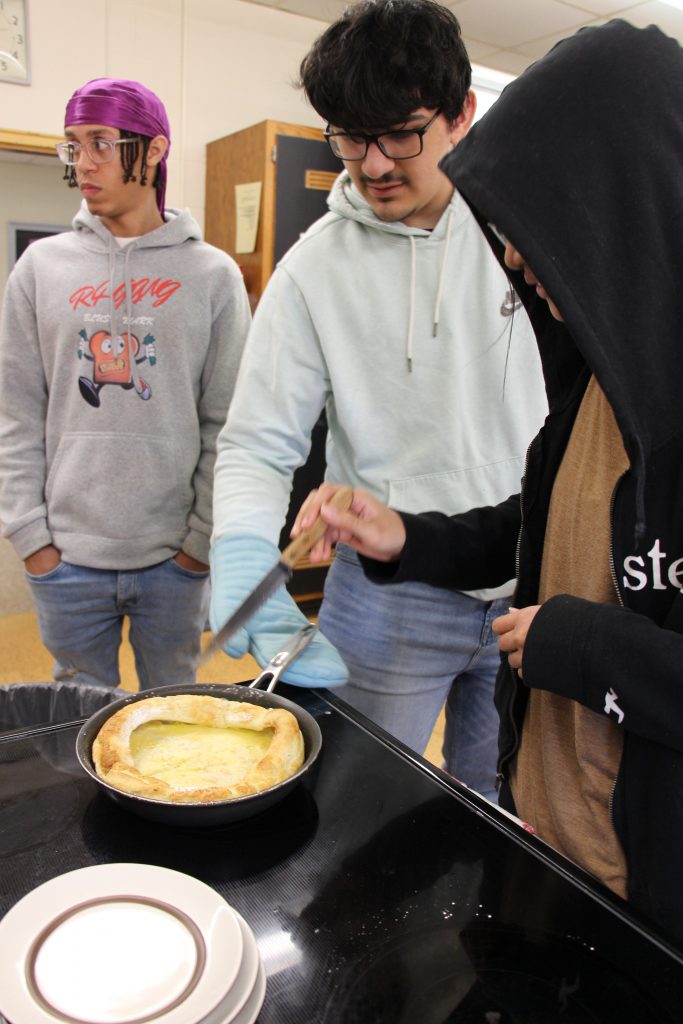
By the way, baking soda needs some type of acid in the recipe in order to do its job. Baking powder already has that acidic agent and reacts with water. Happy baking!
